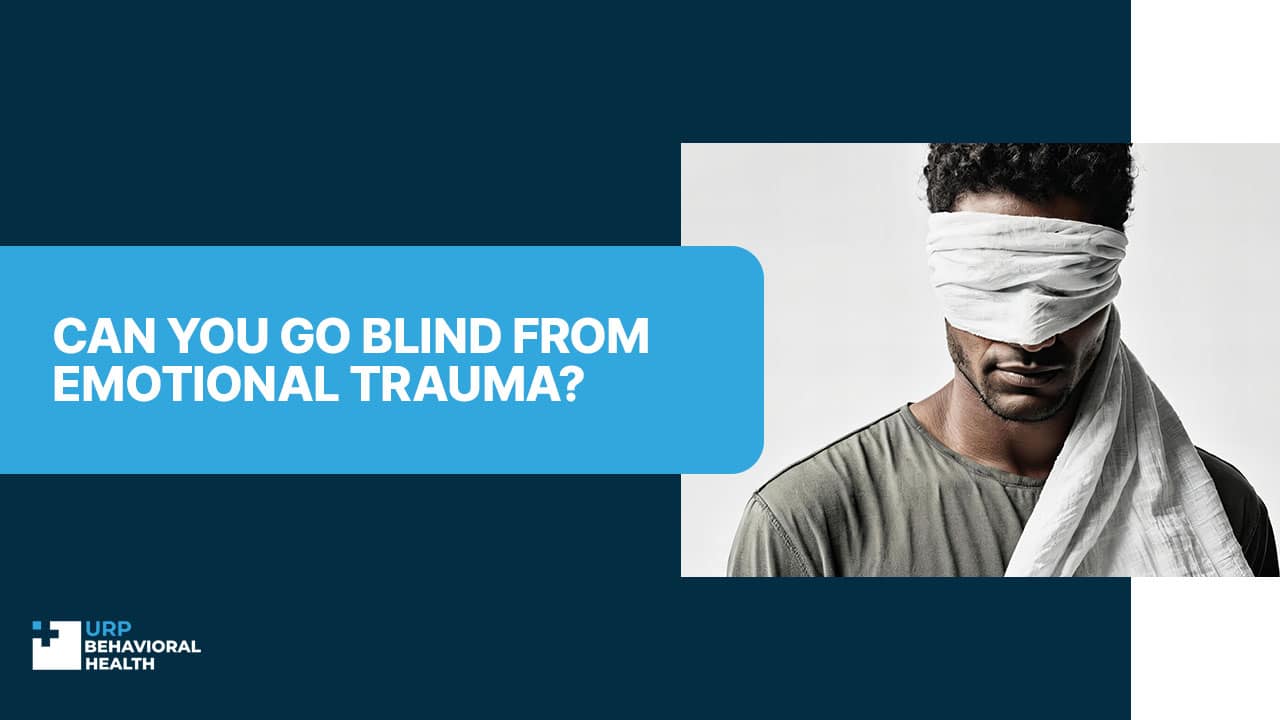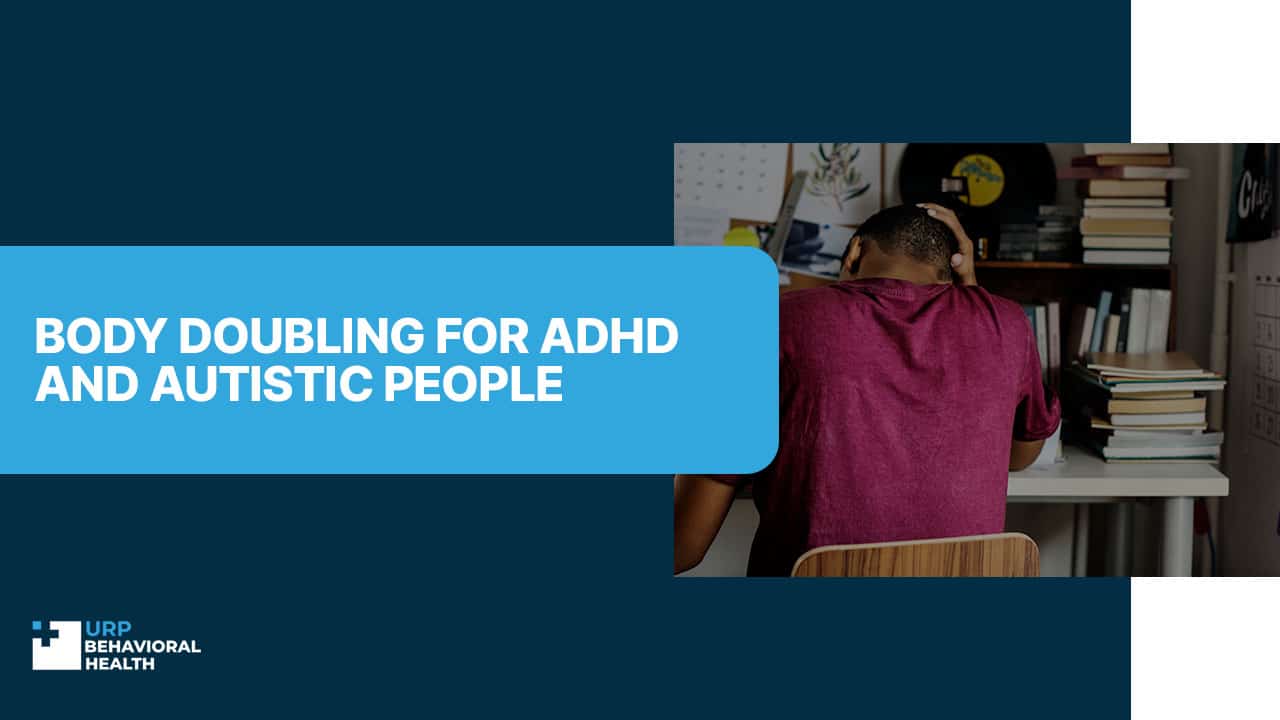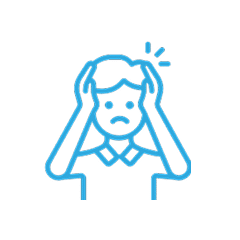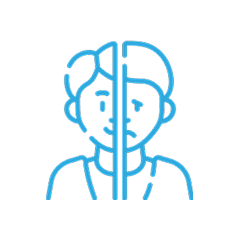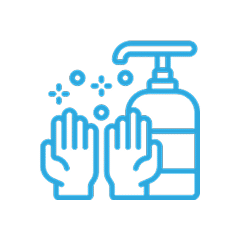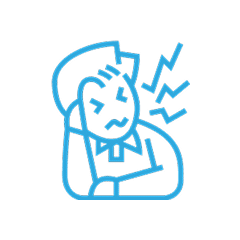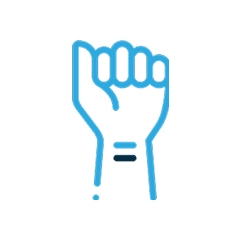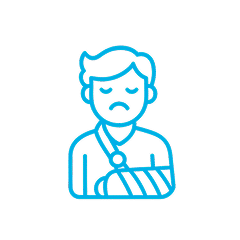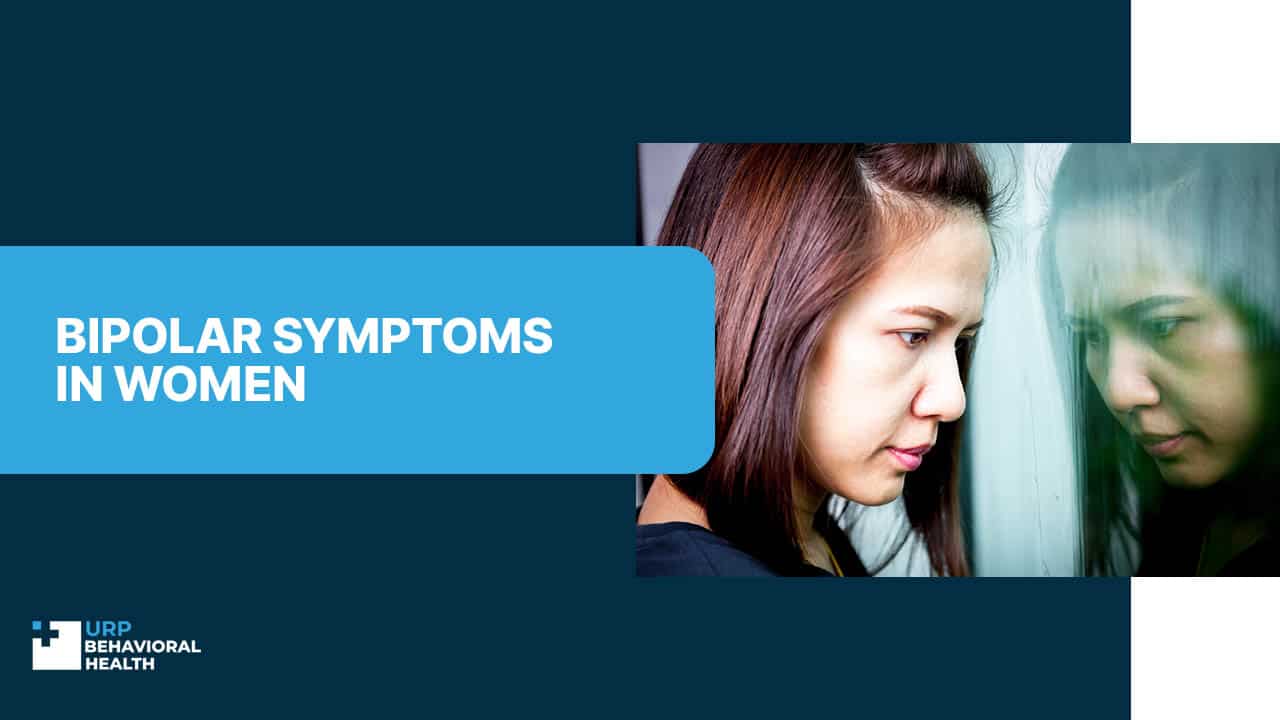
Bipolar Symptoms in Women
“You’re up, then you’re down”, sang Katy Perry in her iconic “Hot n Cold” single, describing signs bipolar women experience, alongside other notable BD symptoms such as mood shifts, impulsivity, and risk-taking demeanors. This condition is embedded into the lives of 2.8% of Americans [1], with a particular impact on females..
If left untreated, the disorder can pull up a bunch of chronic health conditions, lead to self-destructive behavior, and depress overall quality of life. It’s vital to fathom symptoms of bipolar disorder in women to treat the condition right and alleviate its devastating effect. From prevailing symptoms to early warning signs: let’s sort out key BD peculiarities!
Understanding Bipolar Disorder
Female bipolar symptoms may have different roots: from unfavorable genetics to significant stress or trauma. Scientists link this condition to neurotransmitters in the brain that change when a person encounters triggers or stressful shifts in routine. As the disorder develops, it leads to the formation of distinctive characteristics of a bipolar woman which are challenging to treat [2].
What Is Bipolar Disorder?
Bipolar disorder, namely manic-depressive disorder, is a mental health condition that interferes with balanced day-to-day life by atypical mood swings, fluctuations in energy level, and the capacity to concentrate [3]. These ups and downs are more pronounced than an average person may experience, causing problems in sustaining a routine, relations, and work. Bipolar traits in woman commonly appear at 25 years, but the early signs can be spotted earlier. Some women with BD might even need hospitalization for possible safety issues.
Don’t wait - confidential help is available right now for you or your loved one.
Types of Bipolar Disorder
A broad scope of signs of bipolar disorder in women has led to the distinction of four key BD types.
- Bipolar I or Mania
People are diagnosed with bipolar I if they experience one or more episodes of mania lasting for around a week. Mania is an intense state of expansive mood, impulsivity, and grandiosity [4], usually followed by a major depressive episode. A person bursts with energy and euphoria to the extent that they don’t sleep normally and eagerly engage in goal-directed occupations. - Bipolar II: Depression
Bipolar II encompasses one or more episodes of hypomania persisting for four days followed by a profound two-week depressive episode. In between, people may function unobstructedly. Women are more prone to drastic depressive patterns than men and may additionally encounter psychosis, hallucinations, and delusions. - Cyclothymic Disorder
Cyclothymic disorder is characterized by more moderate depressive and hypomanic symptoms occurring more frequently than in bipolar I and II [5]. People may experience consistent two-month periods of comparative stability between the episodes. At other times, cyclothymia manifests in predominant and volatile mood turmoil. - Unspecified Bipolar Disorder
What are the signs of bipolar in a woman to be attributed to an unspecified bipolar disorder? Its symptoms aren’t that forceful and lasting to fall into a particular type. Still, ladies with unspecified bipolar disorder struggle with many challenges like those with other forms of BD.
Key Symptoms of Bipolar Disorder in Women
Signs and symptoms of bipolar disorder in females may differ from symptoms found in men and alter based on a specific episode. The reason lies in physiological peculiarities: some symptoms bipolar women may experience based on their menstrual cycles. Let’s look at shortlists of signs your wife is bipolar or you are the one having this mental condition.
Emotional Symptoms
What are the signs of bipolar disorder in women related to the emotional sphere? These symptom patterns vary, depending on whether a person faces manic, depressive, or “mixed” episodes [6].
- Intense mood episodes;
- Symptoms cover most of the day;
- Extreme sensations accompanied by tangible changes in energy level and demeanor.
This mental illness usually begins with a manic episode followed by a gloomy period of depression.
Mania and Hypomania
Manic episodes typically extend for 7 days and more, accompanied by:
- intense feeling of overwhelming glee (euphoria);
- superfluous energy;
- pressured speech;
- decreased need to sleep and eat;
- grandiose sense of self;
- impulsivity;
- feeling irritated;
- racing ideas;
- troubles with concentration;
- partaking in risky activities;
- in severe cases — psychosis [7], accompanied by such collateral symptoms as delusions, hallucinations, and disorganized speech.
The latter is a distinct marker of mania, which is absent in hypomania, a less intensive mental condition [8], characterized by:
- heightened productivity;
- altered sleep habits;
- restlessness;
- disorganized thoughts;
- expedited speech.
Hypomaniс episodes usually don’t repress a person’s social or working functionality, which eliminates the need for hospitalization.
Depression
According to the World Health Organization, bipolar depression symptoms in females prevail over males in nearly 50% proportion [9].
A typical depressive episode is marked by:
- decline in energy;
- sluggish speech;
- constant tiredness;
- amplified need for sleep;
- feelings of internal void;
- steady sense of worthlessness;
- problems with running daily errands;
- lack of interest in everyday activities;
- potential suicidal thoughts.
Women having a depressive episode may be overwhelmed by the negativity and feel everything is happening in vain.
Behavioral Symptoms
Women with bipolar mental disorder are more prone to:
- overwhelming mood episodes;
- isolation and public censure;
- changes to relations;
- problems with fulfilling a parenting role;
- enforcement to seem “normal” [10].
Learning actionable strategies can help a person with BD to better cope with illness.
Impulsivity
Females with mixed mania may confront impulsivity:
- spontaneous actions;
- altering tasks;
- jumping from one topic of conversation to another.
An impulsive demeanor may result in actions that undermine a woman’s safety.
Risk-Taking Behaviors
People suffering from bipolar disorder can eventually take more risks and put themselves in hazardous situations:
- unprotected sex;
- drinking too much alcohol;
- wasting a lot of money;
- engaging in dangerous activities for adrenaline shots.
Risk-taking behaviors are tightly linked to poor judgment in people with bipolar disorder episodes. They struggle to adequately assess how the developments in a manic state will influence their usual life.
Cognitive Symptoms
Cognitive impairment in BD [11] manifests as:
- problems with planning;
- challenges with processing information;
- possible memory deficiencies;
- noxious thinking patterns.
These cognitive deficits can affect their job and relationships.
Difficulty Concentrating
Problematic concentrating is often associated with a depressive state of BD:
- troubles with focus on a particular theme;
- disability to link thoughts together;
- getting easily distracted.
People experiencing a depressive episode may fail to accomplish the tasks that usually interest them.
Ruminating Thoughts
Bipolar patients often engage in rumination [12], replaying self-focused repetitive thoughts inside their heads. This may negatively impact their ability to perform professional responsibilities, lower work productivity, and induce challenges with socializing.
Reach out today and let us create a treatment plan designed around your needs.
Early Warning Signs to Watch For
Women with bipolar disorder are at heightened risk of misdiagnosis [13], making it vital to spot the early signs of the condition to prevent a delay in treatment.
Signs of Bipolar Disorder in Women
Let’s focus on the peculiarities of bipolar symptoms that are specific to women:
- prevalence of “lows” over “highs”;
- more hasty cycling between depressive episodes over mixed mania;
- collateral physical and mental health issues (alcohol overuse, severe depression, migraine headaches, thyroid disease, substance abuse, and drug-related obesity) [14].
A person with manic-depressive illness should understand what triggers their high and low moods to manage it.
Irritability and Mood Swings
BD symptoms may fluctuate depending on the environment, physical activity, sleeping patterns, hormonal alteration, and medications. Mood swings in women are more dependable on the seasons than in men. Depressive episodes are more predominant in September-February than in March-August.
Irritability comes hand-in-hand with a depressive state, making people briskly get annoyed over minor issues. Despite bipolar women may feel drained of energy in autumn and winter, it’s recommended to exercise regularly to manage mood swings, improve a natural daily cycle, and alleviate symptoms of depression [15].
Changes in Sleep Patterns
BD females are more likely to experience sleep problems than males, which is explained by hormonal factors. Amidst a manic episode, they may feel no need for sleep and spend nights incessantly completing various tasks.
The Role of Relationships in Identifying Symptoms
Healthy relationships can help people with BD detect the symptoms as they evolve. It might be challenging to look at oneself from the outside, and from an individual perspective, things may seem normal. Spouses and caregivers can timely notice bipolar disorder signs and induce a woman to address a mental care professional for a diagnosis. It’s impossible to make a diagnosis without a complete psychiatric exam, but recognizing something is going wrong can save a person years of life thrown on an invisible, exhausting battle.
Is My Wife Bipolar?
You can’t tell it for sure by mere observations, to get an exact answer, professional help is needed. Average people can also have positive moods followed by low moods. However, in bipolar patients, swings in emotion are more intense and atypical of their normal demeanor. Women with extreme depressive episodes can struggle with maintaining hygiene and family responsibilities. They require a lot of care and support to cope with their condition better.
Signs of a Bipolar Girlfriend
When you only started dating a woman, the question “Is my girlfriend bipolar?” might cause your concern. It’s challenging to state at first glance. A good example is a third episode of the “Modern Love” series, where Ann Hathaway played a charismatic lawyer struggling with a severe bipolar disorder. During a manic episode, the girl could function as if she were on cloud nine. Throughout a period of depression, she couldn’t get out of home.
If you notice inconsistent behaviors, extreme emotional splashes, and periods of bursting energy followed by a mood pitfall in your girlfriend, it may signify bipolar disorder. You can’t be completely sure unless she tells you by herself as only a qualified psychiatrist can make this medical diagnosis. It’s better to carefully, without pressure, talk to your girlfriend about this issue. If the symptoms appeared recently, she can be unaware of it, so your thoughtful outside perspective can be invaluable in the long run.
Impact of Hormones on Bipolar Symptoms
The development and severity of bipolar disorder in women are largely dictated by hormonal changes during the menstrual cycle, pregnancy, postpartum, and menopause [16]. It largely affects their needs and the method chosen for bipolar treatment.
Menstrual Cycle Effects
Women with bipolar disorder can observe differences in energy levels and mood in various phases of a menstrual cycle. They are more prone to premenstrual dysphoric disorder (PMDD) than other females. Hormone fluctuations can exaggerate depressive, manic, and hypomanic symptoms, affecting their onset or relapse.
Pregnancy and Postpartum Considerations
Pregnancy and the postpartum phase are vulnerable states for a bipolar woman, during which episodes of hypomania, mania, and depression can worsen. It’s crucial to discuss the possible development of BD symptoms with a healthcare team while planning a pregnancy or during it. Certain bipolar medicines don’t fit pregnant women.
Statistics warn nearly 20-30% of freshly minted mothers with BD experience postpartum psychosis, and around 20% may face hypomania directly after delivery [2]. Psychosis is a serious medical condition that evokes hallucinations, delusions, paranoia, and a collapse of contact with reality. Women may see, hear, and feel things that are not real. It requires the instant attention of a mental care professional.
Conclusion and When to Seek Help
Women experiencing emotional, cognitive, and behavioral symptoms of bipolar disorder such as impulsivity, irritation, changes in sleep patterns, disorganized thoughts, and more need to address professional care as soon as possible. They can unintentionally put their life and health at risk by engaging in activities that undermine their safety.
Females should be especially cautious during a menstrual cycle, pregnancy, and menopause as hormonal changes can worsen mood swings and exaggerate the flow of manic, hypomanic, or depressive episodes. If a bipolar woman is expecting a child, it’s vital to consult a psychiatrist as not all medications for bipolar disorder are compatible with pregnancy.
When ladies with BD receive sufficient care and support from their loved ones, it becomes easier to manage the condition, overcome life’s struggles, and maintain working responsibilities. Relationships play a crucial role in the timely identification of the early signs of this disorder.
We’ll help you understand your options and guide you toward care.
Professional Diagnosis
Bipolar women usually get a misdiagnosis or tardy diagnosis more often than men because they mostly report depressive symptoms. During hypomanic and manic episodes, fewer women tend to seek treatment. However, a lopsided view of existing bipolar symptoms can lead to improper diagnosis and, consequently, treatment with antidepressants solely.
It’s vital to be completely honest with a mental care professional to get an accurate diagnosis and treat it right. The treatment for BD in women includes therapy, pharmaceutical management, and robust support of people from a close circle. Patients have to develop the skills required to successfully manage their symptoms.
Since it’s challenging to diagnose BD in females, opt for a reputable mental health center with experts specializing in bipolar women’s treatment. Credible services may include favorable insurance options to ease your budget implications. Dealing with bipolar disorder is hard, but not impossible. If you notice worsening or relapsing symptoms in yourself or your close ones, don’t hesitate to seek professional help. Our compassionate team can offer an actionable plan to keep you on the safe side.
Resources:
- Harvard Medical School, 2007. National Comorbidity Survey (NSC). 2017, August 21. Link: https://www.hcp.med.harvard.edu/ncs/index.php. Access date: June 28, 2025.
- Indian J Psychiatry. 2015 Jul. Link: https://pmc.ncbi.nlm.nih.gov/articles/PMC4539870/. Access date: June 28, 2025.
- Andrew A. Nierenberg, MD; Bruno Agustini, MD, PhD; Ole Köhler-Forsberg, MD, PhD; Cristina Cusin, MD; Douglas Katz, PhD; Louisa G. Sylvia, PhD; Amy Peters, PhD; Michael Berk, MD, PhD. Diagnosis and Treatment of Bipolar Disorder A Review. 2023. Link: https://www.binasss.sa.cr/bibliotecas/bhm/oct23/42.pdf. Access date: June 28, 2025.
- Mark W. Dailey; Abdolreza Saadabadi. Link: https://www.ncbi.nlm.nih.gov/books/NBK493168/. Access date: June 28, 2025.
- Joseph E. Bielecki; Vikas Gupta. Cyclothymic Disorder. Link: https://www.ncbi.nlm.nih.gov/books/NBK557877/. Access date: June 28, 2025.
- New York State Office of Mental Health. Bipolar Disorder information booklet. 2023. Link: https://omh.ny.gov/omhweb/booklets/bipolar.pdf. Access date: June 28, 2025.
- Subho Chakrabarti, Navdeep Singh. Psychotic symptoms in bipolar disorder and their impact on the illness: A systematic review. PMCID: PMC9521535; PMID: 36186500. Link: https://pmc.ncbi.nlm.nih.gov/articles/PMC9521535/. Access date: June 29, 2025.
- Substance Abuse and Mental Health Services Administration (US). Impact of the DSM-IV to DSM-5 Changes on the National Survey on Drug Use and Health. 2016 Jun. Link: https://www.ncbi.nlm.nih.gov/books/NBK519704/table/ch3.t9/. Access date: June 29, 2025.
- World Health Organization. Depressive disorder (depression). 31 March 2023. Link: https://www.who.int/news-room/fact-sheets/detail/depression. Access date: June 29, 2025.
- Anja Wittkowski, Laura K McGrath & Sarah Peters. Exploring psychosis and bipolar disorder in women: a critical review of the qualitative literature. 18 November 2014. Link: https://bmcpsychiatry.biomedcentral.com/articles/10.1186/s12888-014-0281-0. Access date: June 29, 2025.
- Marsal Sanches, Isabelle E. Bauer, Juan F. Galvez, Giovana B. Zunta-Soares, Jair C. Soares. The Management of Cognitive Impairment in Bipolar Disorder: Current Status and Perspectives. PMCID: PMC4424179; NIHMSID: NIHMS606425; PMID: 25383489. Link: https://pmc.ncbi.nlm.nih.gov/articles/PMC4424179/. Access date: June 29, 2025.
- Sharmin Ghaznavi, Thilo Deckersbach. Rumination in bipolar disorder: evidence for an unquiet mind. PMID: 22738363; PMCID: PMC3384231. Link: https://pubmed.ncbi.nlm.nih.gov/22738363/. Access date: June 29, 2025.
- Tanvir Singh, Muhammad Rajput. Misdiagnosis of Bipolar Disorder. 2006 Oct, 3. PMCID: PMC2945875; PMID: 20877548. Link: https://pmc.ncbi.nlm.nih.gov/articles/PMC2945875/. Access date: June 29, 2025.
- Freeman, M.P., Smith, K.W., Freeman, S.A., McElroy, S.L., Kmetz, G.F., Wright, R., et al. (2002). The Impact of Reproductive Events on the Course of Bipolar Disorder in Women. Journal of Clinical Psychiatry. Link: https://www.psychiatrist.com/jcp/impact-reproductive-events-course-bipolar-disorder/. Access date: June 29, 2025.
- Isabelle E. Bauer, Juan F. Gálvez, Jane E. Hamilton, Vicent Balanzá-Martínez, Giovana B. Zunta-Soares, Jair C. Soares, Thomas D. Meyer. Lifestyle interventions targeting dietary habits and exercise in bipolar disorder: a systematic review. Link: https://www.sciencedirect.com/science/article/abs/pii/S0022395615300236?via%3Dihub. Access date: June 29, 2025.
- Lesley M Arnold. Gender differences in bipolar disorder. PMID: 14563100. Link: https://pubmed.ncbi.nlm.nih.gov/14563100/. Access date: June 29, 2025.

